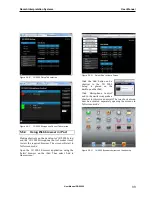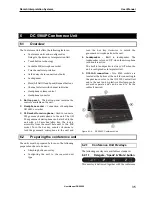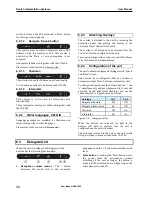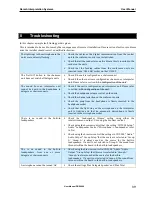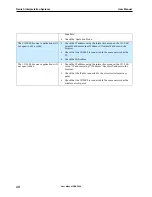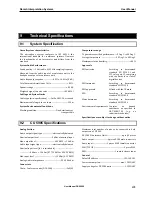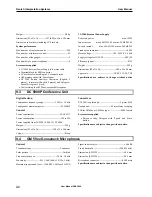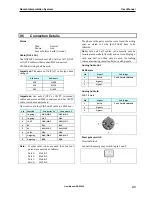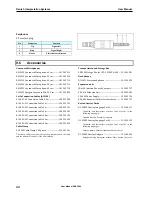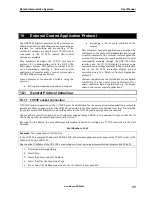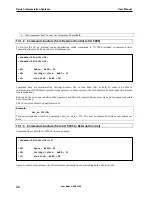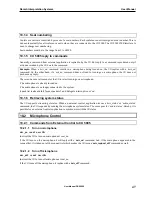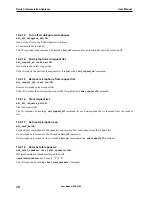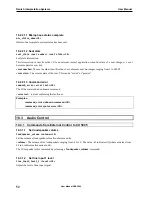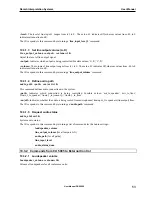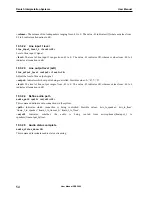
Danish Interpretation Systems
User Manual
10.1.4 Seat numbering
Conference units are identified by means of a seat numbers. Each conference unit is assigned a seat number. This is
done automatically for all conference units, when they are connected to the CU 5905. The CU 5905 WEB interface is
used to change seat numbering.
Seat numbers must be in the range from 1 to 65535.
10.1.5 CU 5905 reply to commands
Generally, a command from external application is replied to by the CU. But, reply to a command is produced only if
actions are taken by the CU due to the command.
Example:
When a ‘mic_on’ command results in a microphone being turned on, the CU replies with a ‘mic_on’
command. On the other hand, if a 'mic_on' command does not lead to turning on a microphone, the CU does not
produce any reply.
There can be several reasons for the CU to reject turning on a microphone:
‐The microphone is already turned on
‐The microphone is no longer connected to the system.
‐Speak list is already full (‘max_speakers’), and delegate interrupt is not ‘on’.
10.1.6 Retrieving system status
The CU supports streaming of status. When an external control application issues a ‘mic_status’ or ‘audio_status’
command, the CU responds by sending the microphone system status. The same goes for ‘audio status’. Hereby, it is
possible for an external control application to synchronize with the CU status.
10.2
Microphone Control
10.2.1 Commands from External Control to CU 5905
10.2.1.1
10.2.1.2
Turn on microphone
mic_on
<seat
no><CR>
Instruct the CU to turn on microphone at seat_no.
If the CU turns on the microphone, it will reply with a ‘
mic_on’
command. And, if the microphone appeared in the
equest list, it is taken out of the request list, which makes the CU issue a ‘
mic_request_off
’ command as well.
r
Turn off microphone
mic_off
<seat
no><CR>
Instruct the CU to turn off microphone at seat_no.
f the CU turns off the microphone, it replies with a ‘
mic_off
’ command.
I
User Manual DDS 5900
47

